The Cognitive Athlete: Task Duration and Load
Think of the brain as a muscle. When you lift weights, the duration and intensity of the exercise determine the muscle's workload. Similarly, the duration of a cognitive task influences the brain's workload. The longer and more complex a task, the higher the cognitive load it imposes.
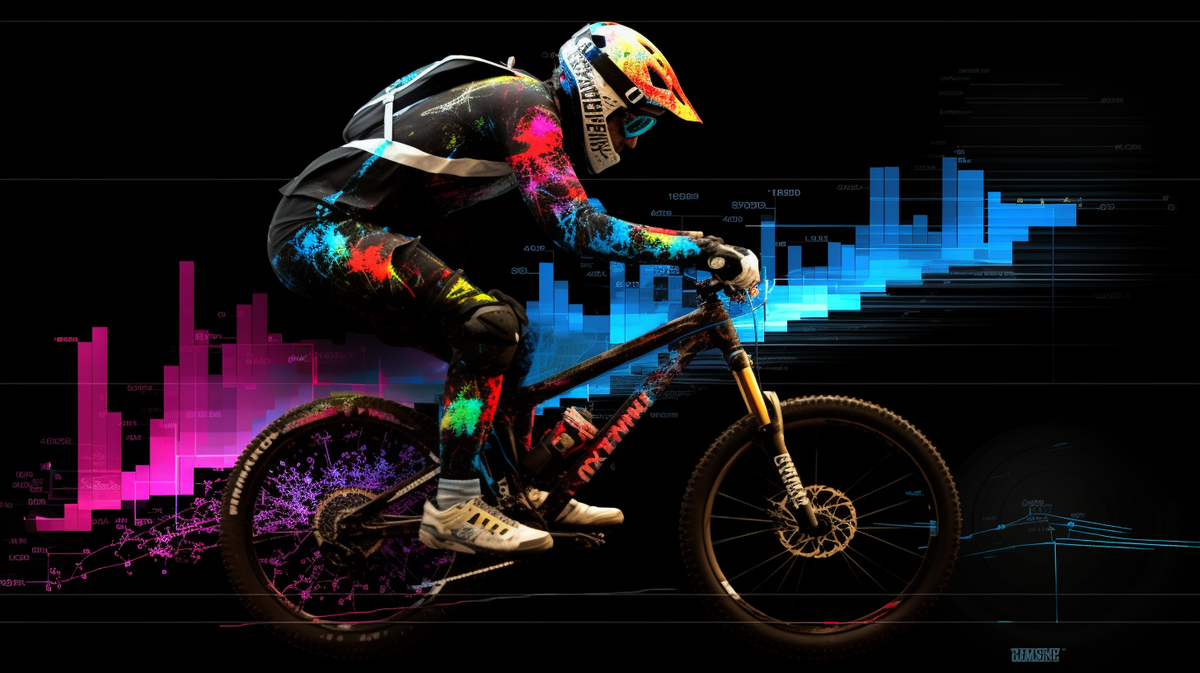
In today's hyper-competitive world of sports, the margins that differentiate the good from the great are minuscule. While physical performance and skill are undeniable assets, an athlete's cognitive abilities often emerge as the unspoken game-changer. This is where the intertwined concepts of cognitive training and cognitive load come into play. At its core, cognitive training seeks to sharpen an athlete's mental skills, thereby enhancing their on-field performance. But how does one measure the intensity of these mental drills? This is quantified through cognitive load, which essentially gauges the mental effort an athlete is required to perform a task.
Understanding Cognitive Load
When athletes are training or competing, their brains are continually processing a barrage of information: the trajectory of a ball, the position of opponents, or even recalling a strategic play. Cognitive load refers to the mental demands placed on an athlete's brain.
However, there's a limit to how much it can handle at once. If the demands of a task surpass this capacity, the result can be errors in performance or even cognitive fatigue.
In sports, understanding and managing cognitive load is crucial. It determines whether an athlete can react promptly to an opponent's move or recall a specific strategy under pressure. Just as an athlete wouldn't overtrain physically to avoid injuries, it's essential not to overwhelm the brain with excessive cognitive demands. Balancing this load ensures optimal performance and reduces mental exhaustion.
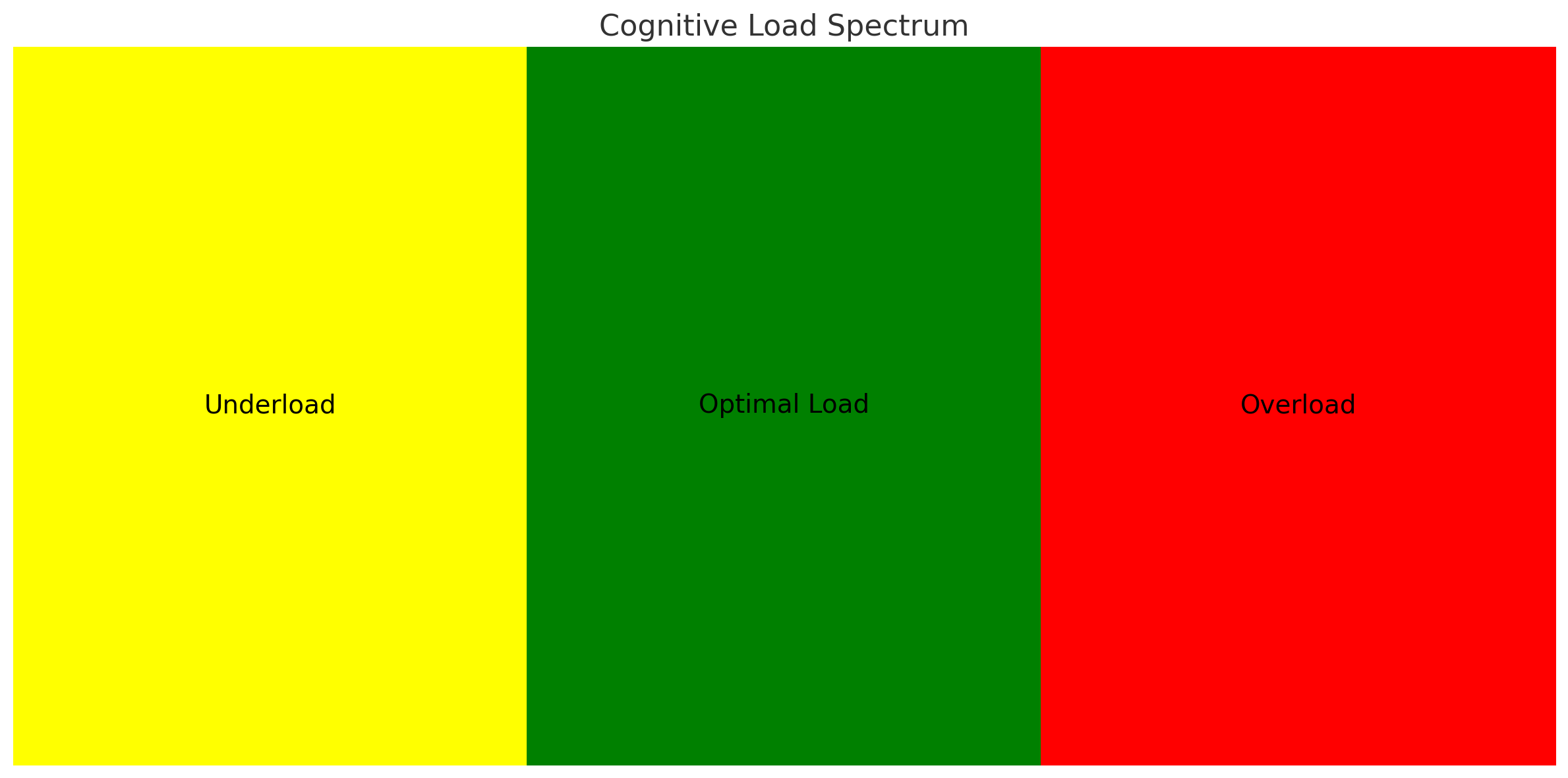
Task Duration: Its Role in Cognitive Training
Think of the brain as a muscle. When you lift weights, the duration and intensity of the exercise determine the muscle's workload. Similarly, the duration of a cognitive task influences the brain's workload. The longer and more complex a task, the higher the cognitive load it imposes.
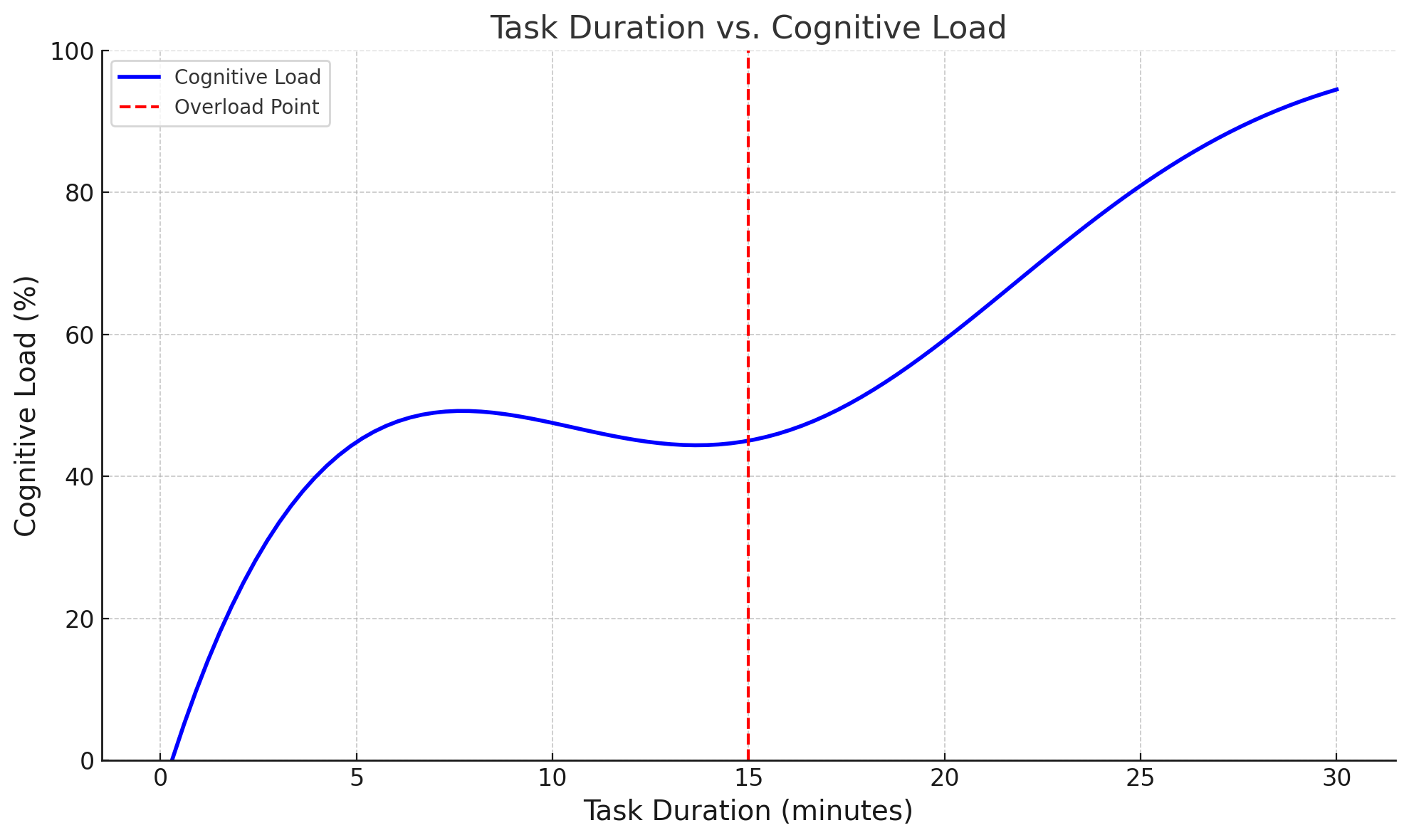
For instance, if an athlete practices a drill that requires intense focus for 5 minutes, they will experience a certain level of cognitive load. But if the same drill extends to 15 minutes without any breaks, the cognitive load amplifies. This is because the brain has to maintain the same level of focus and decision-making for a more extended period, making it work harder.
But here's the catch: more isn't always better. While extending the duration of a cognitive training task can strengthen mental endurance, it's also essential to strike a balance. Too much cognitive load can lead to mental fatigue, decreased performance, and increased risk of errors. Hence, understanding and adjusting task duration becomes a pivotal strategy in optimizing cognitive training outcomes.
To put it into perspective, consider a soccer player practicing penalty shots. While taking 10 shots may help refine the skill, taking 100 consecutive shots might lead to fatigue and diminishing returns in skill enhancement. Similarly, in cognitive tasks, there's an optimal duration that yields the most benefits without causing undue strain.
Minimal Effective Dose & Cognitive Deloading
In the world of medicine, there’s a principle known as the 'minimal effective dose' (MED). It's the smallest dose that produces a desired outcome. The same concept can be applied to cognitive training. When starting a cognitive training regimen, the goal is not to push the brain to its limits immediately. Instead, one should aim for the least amount of training that produces noticeable improvement – the cognitive equivalent of the MED. For many athletes, this starts at around 45 minutes per week, spread across multiple sessions.
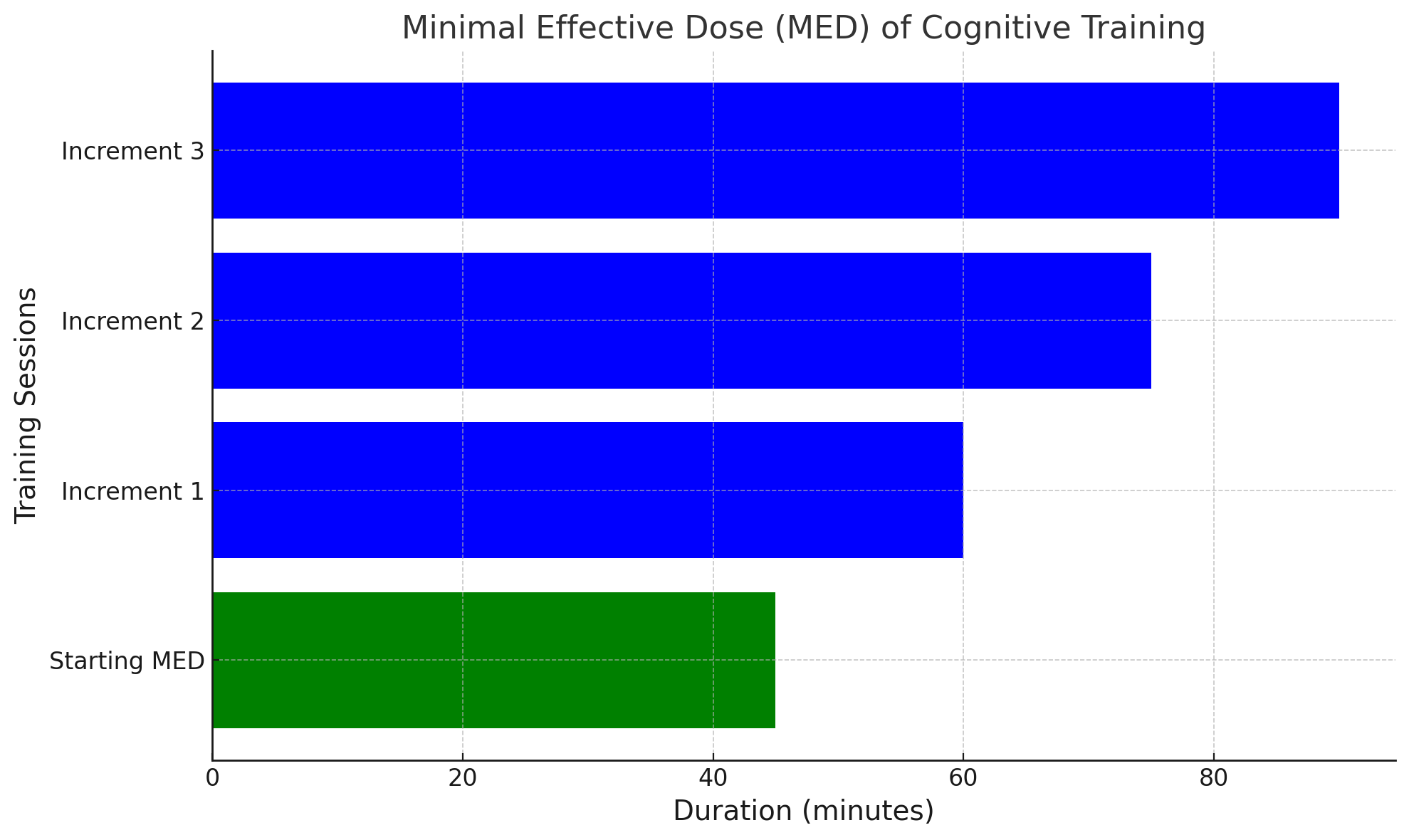
This duration provides enough stimulus for the brain to grow and adapt without causing undue stress or fatigue. However, as with any training, consistency and progression are key. While 45 minutes might be an excellent starting point, as the athlete's cognitive abilities develop, it becomes necessary to increase the task duration incrementally. This progressive increase is akin to adding weights to a barbell as one gets stronger.
Now, let’s talk about cognitive deloading. Just as athletes need rest days in their physical training regimen, the brain also needs time to recover and solidify the gains made during cognitive training. Cognitive deloading involves reducing the task duration or complexity, allowing the brain a 'lighter' day. This strategy ensures that while the brain is consistently stimulated, it also gets ample opportunities to rest and recover, promoting sustainable growth and minimizing the risk of cognitive burnout.
While it's vital to give the brain its well-deserved rest periods, it's equally crucial not to make the error of under-challenging it. Just as physical training requires a certain level of intensity to see growth, cognitive training must strike the right balance. Let's explore this delicate equilibrium further.
Striking the Right Balance: Starting Easy, but Not Too Easy
Starting a cognitive training regimen with modest durations, such as 15 minutes, doesn’t mean the content of that session should be easygoing or without challenge. The principle is akin to lifting weights in a gym. Starting with lighter weights doesn’t mean lifting a feather – it means choosing a weight that is manageable yet still requires effort to lift. The same applies to cognitive training. The initial sessions, even if brief, must be crafted in a manner that provides a tangible challenge to the brain. It's about inducing just the right amount of cognitive stress to push the boundaries of the brain's current capacities. This stress acts as the catalyst for neural adaptations, signaling to the brain that it needs to rewire and strengthen its connections to handle similar future challenges more effectively. Simply put, the aim is to find the sweet spot – a task duration and complexity that is neither overwhelming nor too trivial. This ensures that even in those starting sessions of 15 minutes, the brain experiences enough cognitive strain to jumpstart its journey of growth and adaptation.
Task Duration: A Dominant Factor in Sports Training
At first glance, the emphasis on task duration in cognitive training might seem excessive. However, it's this very element that often dictates the efficacy of the entire training regimen. Much like in physical training where the number of repetitions, sets, and rest periods are meticulously planned, the duration of cognitive tasks needs a similar level of consideration.
By manipulating task duration, athletes can intentionally adjust the cognitive load they undergo. For elite athletes, who constantly juggle between physical and cognitive demands, recognizing the power of task duration is indispensable. It's not just about training hard but training smart.
Managing Mental Fatigue with the PVT-B Test
Utilizing the PVT-B test before and after training sessions provides invaluable insights into mental fatigue, facilitating necessary adjustments to the cognitive training load.
Deciphering PVT-B Data
Understanding the PVT-B outcomes is of utmost importance. Certain markers, such as slow reaction times, increased variability in responses, and a rise in lapses (reactions slower than 355ms), are red flags for escalating mental fatigue. By keeping a pulse on these metrics, we can ensure that athletes are receiving the right amount of cognitive load, without tipping them over into burnout territory.
Balancing Cognitive Load: A Fine-tuned Approach
Feedback from the PVT-B test serves as a valuable indicator when gauging the cognitive load on athletes. If there's a notable increase in lapses or a decline in reaction speeds after training, it highlights the session's impact in challenging the athlete's cognitive capabilities, provided adequate recovery is planned.
In the graph below, spanning 30 days, you can observe that the athlete consistently began each session with the same PVT-B pre-training reaction time (represented by the blue line). The red line indicates that there was a sufficient load applied during training, and importantly, the athlete was able to recover from it.
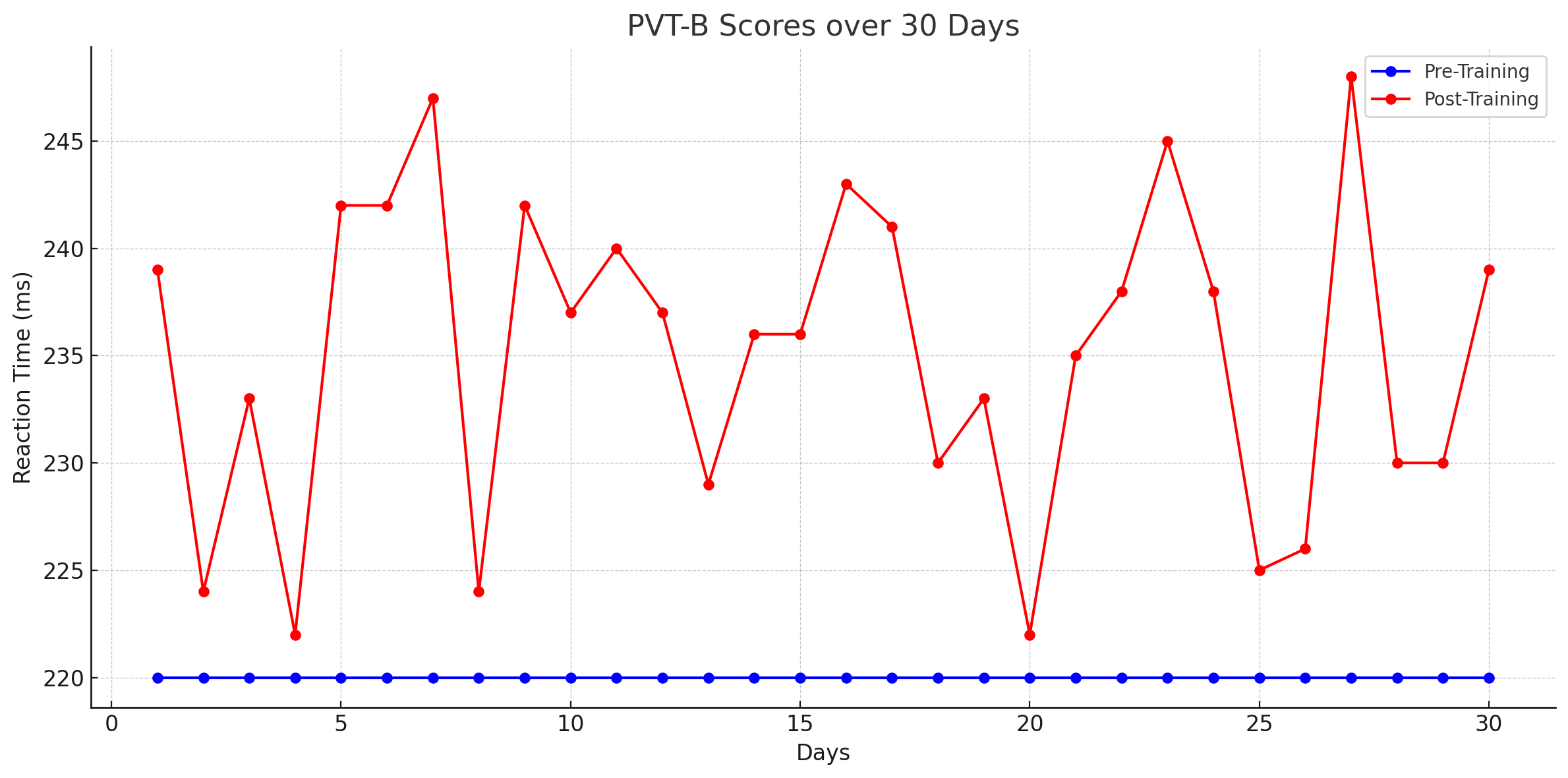
Conversely, a consistent rise in these metrics before training sessions suggests a potential issue, signaling a need to either adjust the cognitive load or allocate more time for recovery.
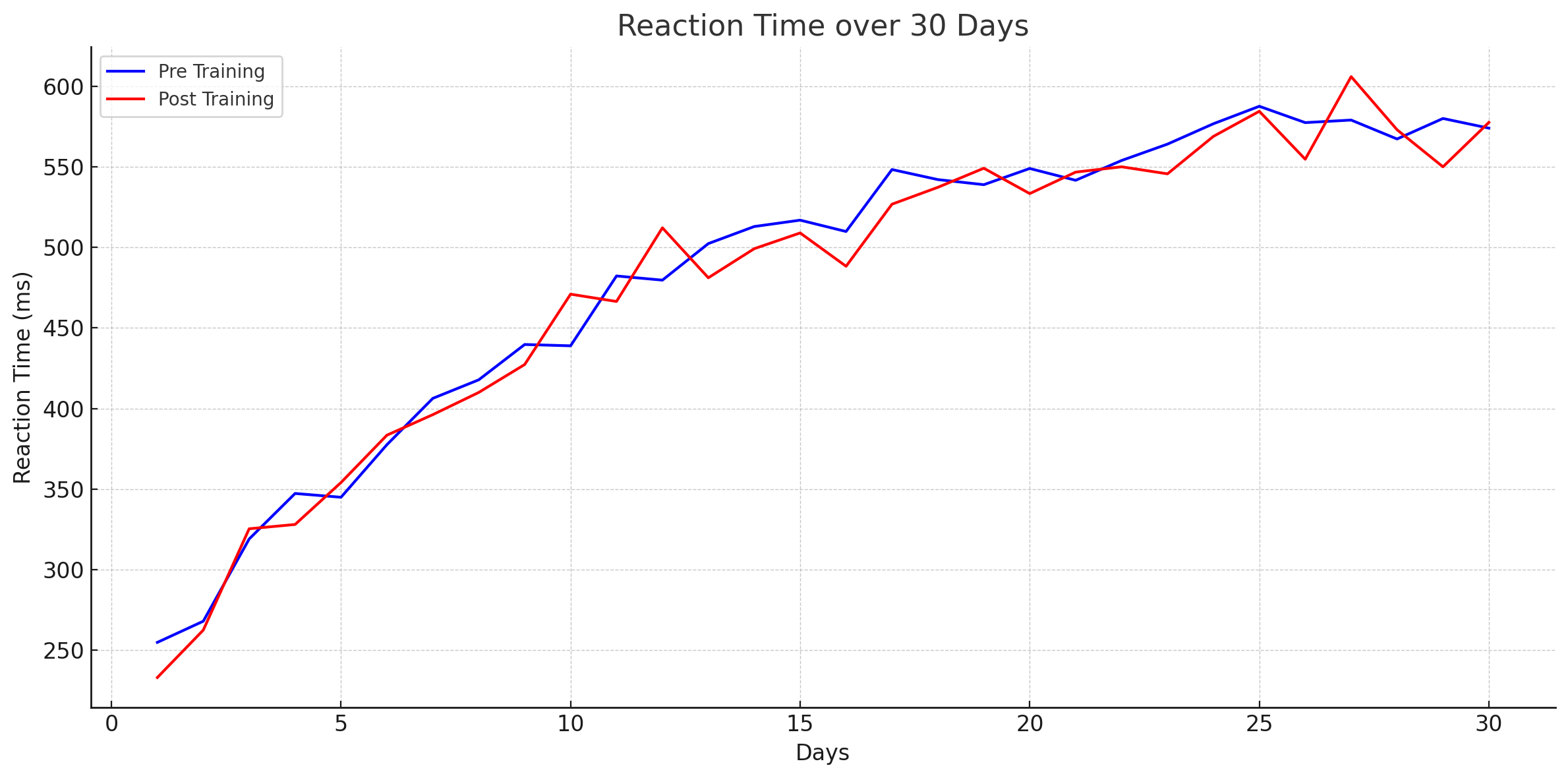
If PVT-B scores consistently remain stable, it may indicate that the cognitive demands of the training are well-matched with the athlete's capabilities. Employing such a strategy could be intentional during lighter training phases or as a competition nears. However, if there's minimal variation in scores, it's essential to examine the data closely and contemplate increasing the overall cognitive load to ensure the athlete is adequately challenged.
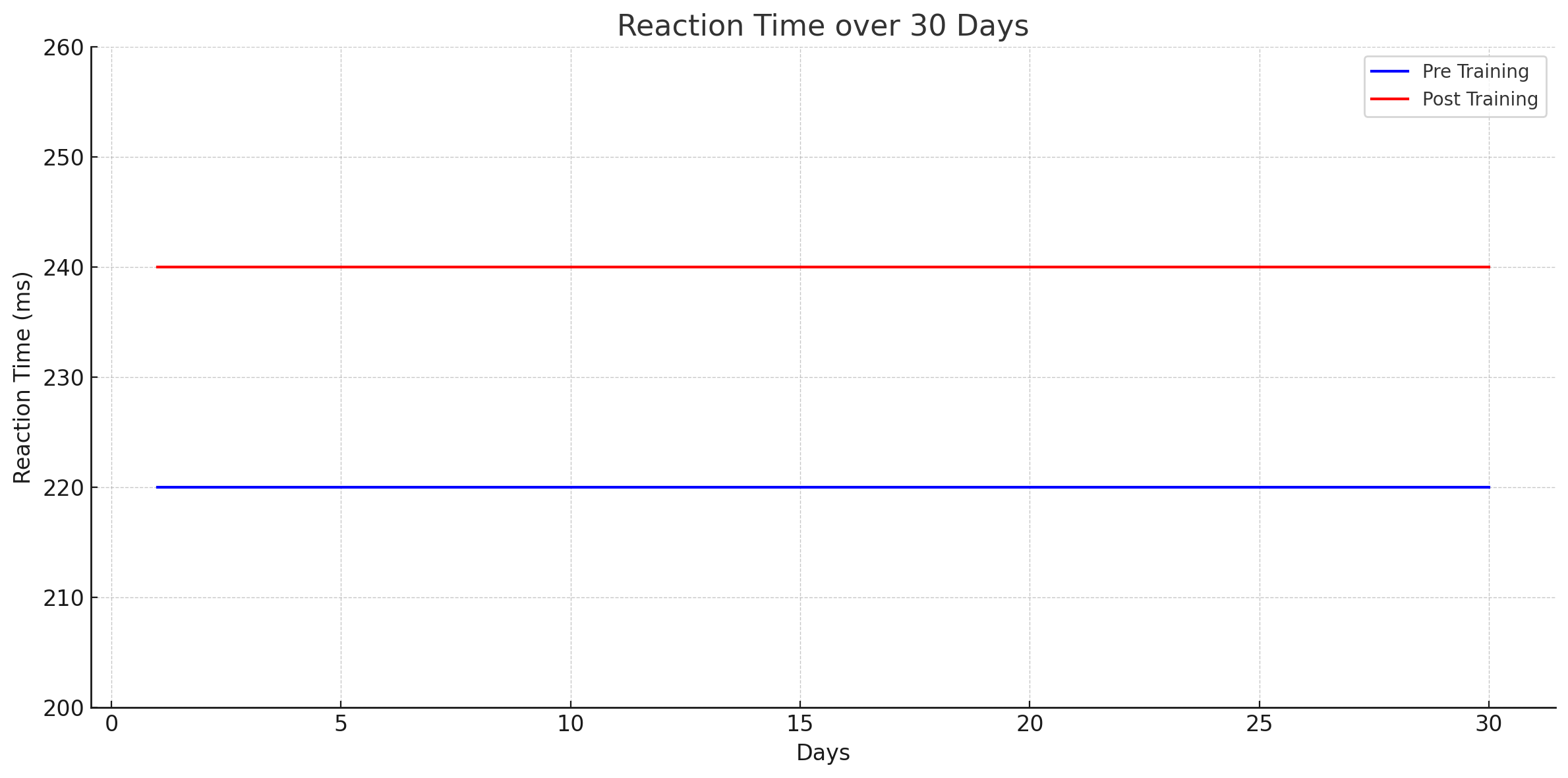
Conclusion
In an era where sports are evolving at a rapid pace, athletes are continually seeking ways to gain an edge over their competition. While physical prowess has traditionally been the focus of training, the significance of cognitive abilities cannot be overlooked. As we've explored, cognitive training, with its nuanced approach to task duration and cognitive load management, holds the key to unlocking an athlete's full potential.
As sports become more intricate and the demands on athletes multiply, those who embrace a holistic approach to training – encompassing both the physical and the mental – will invariably find themselves a step ahead of the rest. Whether you're an athlete, coach, or simply a sports enthusiast, understanding the interplay between cognitive training and cognitive load can offer a fresh lens through which to view the world of sports. After all, in the high-stakes arena of elite competition, every advantage counts.
🌐 Connect With Us
🌍 Soma Technologies: Engineered to enhance human performance.
📸 Instagram: Dive into our world through exclusive photos and stories.
👥 Facebook: Join our community for the latest updates and discussions.
📈 LinkedIn: Connect with us professionally and stay informed about industry news.
🎥 YouTube: Watch our latest videos, tutorials.
🐦 X: Follow us for instant updates, news, and engaging tweets.
